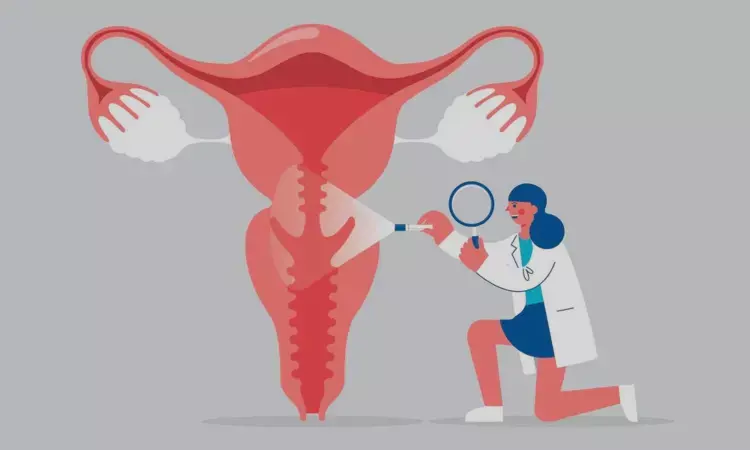- Home
- Medical news & Guidelines
- Anesthesiology
- Cardiology and CTVS
- Critical Care
- Dentistry
- Dermatology
- Diabetes and Endocrinology
- ENT
- Gastroenterology
- Medicine
- Nephrology
- Neurology
- Obstretics-Gynaecology
- Oncology
- Ophthalmology
- Orthopaedics
- Pediatrics-Neonatology
- Psychiatry
- Pulmonology
- Radiology
- Surgery
- Urology
- Laboratory Medicine
- Diet
- Nursing
- Paramedical
- Physiotherapy
- Health news
- Fact Check
- Bone Health Fact Check
- Brain Health Fact Check
- Cancer Related Fact Check
- Child Care Fact Check
- Dental and oral health fact check
- Diabetes and metabolic health fact check
- Diet and Nutrition Fact Check
- Eye and ENT Care Fact Check
- Fitness fact check
- Gut health fact check
- Heart health fact check
- Kidney health fact check
- Medical education fact check
- Men's health fact check
- Respiratory fact check
- Skin and hair care fact check
- Vaccine and Immunization fact check
- Women's health fact check
- AYUSH
- State News
- Andaman and Nicobar Islands
- Andhra Pradesh
- Arunachal Pradesh
- Assam
- Bihar
- Chandigarh
- Chattisgarh
- Dadra and Nagar Haveli
- Daman and Diu
- Delhi
- Goa
- Gujarat
- Haryana
- Himachal Pradesh
- Jammu & Kashmir
- Jharkhand
- Karnataka
- Kerala
- Ladakh
- Lakshadweep
- Madhya Pradesh
- Maharashtra
- Manipur
- Meghalaya
- Mizoram
- Nagaland
- Odisha
- Puducherry
- Punjab
- Rajasthan
- Sikkim
- Tamil Nadu
- Telangana
- Tripura
- Uttar Pradesh
- Uttrakhand
- West Bengal
- Medical Education
- Industry
Cervical Cancer Screening: Vaginal Self-Sampling Outshines Urine in Accuracy, Study Finds

China: A recent meta-analysis published in the International Journal of Gynecology & Obstetrics has found that both vaginal and urine self-sampling methods offer reliable diagnostic accuracy in detecting cervical cancer, with vaginal sampling proving slightly more effective than urine-based testing.
The study highlights the potential of self-collected samples as a viable alternative to clinician-collected cervical samples, especially in increasing participation in cervical cancer screening programs.
"Vaginal and urine self-sampling showed strong diagnostic accuracy for cervical cancer detection across 15 studies, with both methods reporting high sensitivity (0.88), specificity (0.81), and AUC (0.92)," the researchers reported. "Vaginal self-sampling outperformed urine in detecting high-risk HPV (sensitivity 0.92 vs. 0.83; AUC 0.93 vs. 0.88). It also showed superior sensitivity (0.98) for identifying lesions >CIN2."
Dong-mei Li, Department of Obstetrics and Gynecology, West China Second University Hospital, Sichuan University, Chengdu, China, and colleagues systematically analyzed data from 15 studies involving 3,665 women, all of whom had previously received abnormal cervical cancer screening results. Using rigorous methods outlined by PRISMA 2020 guidelines, data were pooled and analyzed to compare the sensitivity, specificity, and overall diagnostic performance, measured by the area under the receiver operating characteristic (ROC) curve, of the different sample collection approaches.
The key findings include the following:
- Both vaginal and urine self-sampling methods showed high diagnostic accuracy for cervical cancer screening.
- Overall, self-sampling methods had a pooled sensitivity of 88%, a specificity of 81%, and an AUC of 0.92.
- Vaginal self-sampling demonstrated better performance in detecting high-risk human papillomavirus (HR-HPV), with a sensitivity of 92% and an AUC of 0.93.
- Urine self-sampling for HR-HPV showed a sensitivity of 83% and an AUC of 0.88.
- The specificity for HR-HPV detection was nearly the same for both methods, around 80–81%.
- Vaginal self-sampling showed a sensitivity of 98% and an AUC of 0.98 in identifying cervical lesions graded >CIN2.
- Urine self-sampling for >CIN2 lesions demonstrated a sensitivity of 95% and an AUC of 0.95.
- Both sampling techniques had similar specificity for detecting >CIN2 lesions, approximately 62–63%.
The findings support the use of self-sampling as a credible and convenient option for cervical cancer screening, particularly in settings where access to clinician-based testing is limited or where cultural barriers discourage clinical visits. The higher diagnostic accuracy of vaginal self-sampling may make it the preferred method in such contexts.
The researchers note that by offering women more autonomy and privacy in the screening process, self-collection methods have the potential to increase participation rates, facilitate early detection, and ultimately reduce the global burden of cervical cancer.
"Overall, the study reinforces that while both self-sampling techniques are effective, vaginal self-sampling slightly edges out the urine-based collection in diagnostic accuracy, especially for high-risk HPV detection and precancerous lesions," they concluded.
Reference:
Zeng, X., & Lian, R. Accuracy analysis of cervical cancer screening using urine and vaginal self-sampling versus clinician-collected samples: A systematic review and meta-analysis. International Journal of Gynecology & Obstetrics. https://doi.org/10.1002/ijgo.70207
Dr Kamal Kant Kohli-MBBS, DTCD- a chest specialist with more than 30 years of practice and a flair for writing clinical articles, Dr Kamal Kant Kohli joined Medical Dialogues as a Chief Editor of Medical News. Besides writing articles, as an editor, he proofreads and verifies all the medical content published on Medical Dialogues including those coming from journals, studies,medical conferences,guidelines etc. Email: drkohli@medicaldialogues.in. Contact no. 011-43720751


